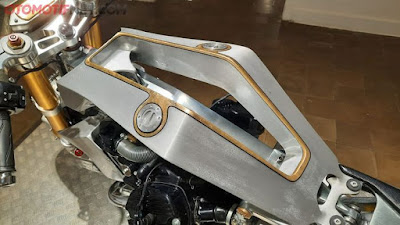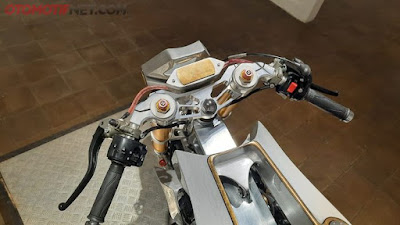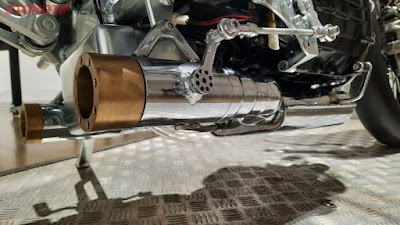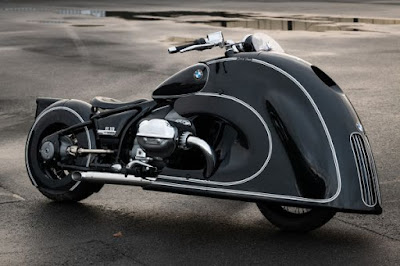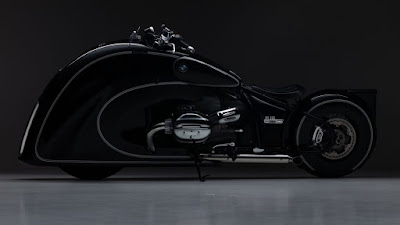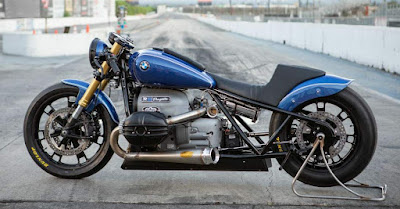Legendary ONES It becomes something interesting to discuss, when there is a classic car that is touted as one of the legendary models made by the famous brand of Roll-Royce. As we know that in addition to producing super luxury vehicles, Roll-Royce is also known as an aircraft engines manufacturer.
 |
| Look how gorgeous the 1925 Roll-Royce Phantom I Jonckheere Coupe or Round Doors Roll while sat on display at the Petersen Automotive Museum in 2016. (Picture from: http://bit.ly/3cFAZXN) |
 |
| Look how gorgeous the 1925 Roll-Royce Phantom I Jonckheere Coupe or Round Doors Roll while sat on display at the Petersen Automotive Museum in 2016. (Picture from: http://bit.ly/3cFAZXN) |
One model that bears the title of the most beautiful Rolls-Royce car ever graced our eyeballs is the 1925 Rolls-Royce Phantom I Jonckheere Coupe or Round Doors Roll Actually, this is not the original car made by the British automotive manufacturer, but has undergone a bodywork overhaul carried out by Jonckheere Carrossiers, a coachbuilder company of Belgium (the company still exists today as VDL Jonckheere).
In our opinion, the 1925 Jonckheere coupe could be compared to the 1936 Bugatti Type 57SC Atlantic which also looks like carries a similar design because it originates from the era of 1920s and 1930s as well.
 |
| Look how gorgeous the 1925 Roll-Royce Phantom I Jonckheere Coupe or Round Doors Roll while sat on display at the Petersen Automotive Museum in 2016. (Picture from: http://bit.ly/3cFAZXN) |
Indeed, custom coachbuilding in the 1920s and 1930s has become a self-expression form for the rich and famous make their owned vehicles looks unique and special. Well, in the hands of the Belgium coachbuilder, the 1925 Rolls-Royce Phantom I standard model experienced a drastic bodywork change into what is arguably the most ominous Rolls-Royce coachwork ever created.
 |
| The 1925 Roll-Royce Phantom I Jonckheere Coupe or Round Doors Roll uses the typical Phantom I straight 6 restored engine (Picture from: https://bit.ly/2O7tT4i) |
As qouted of thetruthaboutthecars.com, initially this car started its life as 1925 Phantom I model with the stately Hooper cabriolet body, but was never delivered to its original Detroit purchaser for unknown reasons. Instead, it was later sold as a new car to Raja of Nanpara in northern India. After that, the Phantom I passed through several more owners before making its way to Belgium in 1932. Two years later the car found itself at the Jonckheere Carrossiers workshop undergoing an extensive makeover.
As quoted from heacockclassic.com, the fashionable aerodynamic fastback body fitted on the Phantom I today is undoubtedly inspired by the luxury French chassis and coachwork from designers such as Jacques Saoutchik, Joseph Figoni, and the house of Letourneur et Marchand. Some of the elements attached to this exotic coupe suggest that the Jonckheere Carrossiers have done something different in modifying a Roll-Royce car and not many other designers or coachbuilders of the day had done.
 |
| Look how beautiful chrome and woodwork proudly displayed on the dashboard inside the 1925 Roll-Royce Phantom I Jonckheere Coupe or Round Doors Roll. (Picture from: https://bit.ly/2O7tT4i) |
At the time, there's very few designers considered (even dared) to modify the traditional Roll-Royce vertical grille, but look at what the Jonckheere did by a more streamlined profile for the new Phantom's body, coupled with a pair of bullet-shaped headlamps, flowing fenders and a long vertical tail fin under the boot lid finish off the sleek contours. That's an exotic touch and significantly made it appeared very different from the original Roll-Royce Phantom I model.
While others are still experimenting with oval doors, Jonckheere has boldly applied the unique, large round doors which operate flawlessly as the passenger access into one of the rows of seats. However, this round shape present an issue for operating windows. The solution was to fabricate a two piece window that simultaneously split like scissors down into the door.
 |
| Look how gorgeous the 1925 Roll-Royce Phantom I Jonckheere Coupe or Round Doors Roll while sat on display at the Petersen Automotive Museum in 2016. (Picture from: http://bit.ly/3cFAZXN) |
This car is nearly 20 feet long, so it can be called the largest 2-door coupe ever existed. Too bad a few years later the Jonckheere's workshop caught fire leaving all work records destroyed, so it remains unknown who commissioned or designed this one-of-a-kind automotive masterpiece.😭
Although this car is not a favored design by most die-hard Rolls-Royce enthusiasts, but throughout the existence of this car in the world, countless achievements have been made by it in winning over the Concours d’Elegance judge’s hearts.
 |
| Look how gorgeous the 1925 Roll-Royce Phantom I Jonckheere Coupe or Round Doors Roll while sat on display at the Petersen Automotive Museum in 2016. (Picture from: http://bit.ly/3cFAZXN) |
Before the 2nd World War, the car landed in the United States after passed through several other owners. Reportedly, it was fell into disrepair due to negligence of the owner, but fortunately it was found again in the 1950s but in near derelict condition. This car was later acquired by Max Obie, an East Coast entrepreneur and early classic enthusiast.
The car is refurbished by him and painted it gold with several pounds of actual gold flake added to the paint for maximum visual impact. After that the Round Doors Roll lived its life as a show car spiced with fake rumours, which was said once owned by King Edward VIII, later the Duke of Windsor. Max Obie's trick seems to have succeeded in attracting the press interest to expose the car and make it a money-making machine for him through much like a freak show.😒
After that the car went through several owner changes, culminating in the early 1990s, when a Japanese collector bought it at an auction for around $1.5 million. In the 2001, the Petersen Automotive Museum bought it for an unknown price in 2001.
For those of you who are still curious whether the Round Doors Roll is really a real car, You should come to see it on display at the Petersen Automotive Museum in Los Angeles, California. *** [EKA | FROM VARIOUS SOURCES | THE TRUTH ABOUT CARS | LEITHCARS | HEACOCKCLASSIC ]
Note: This blog can be accessed via your smart phone.
















